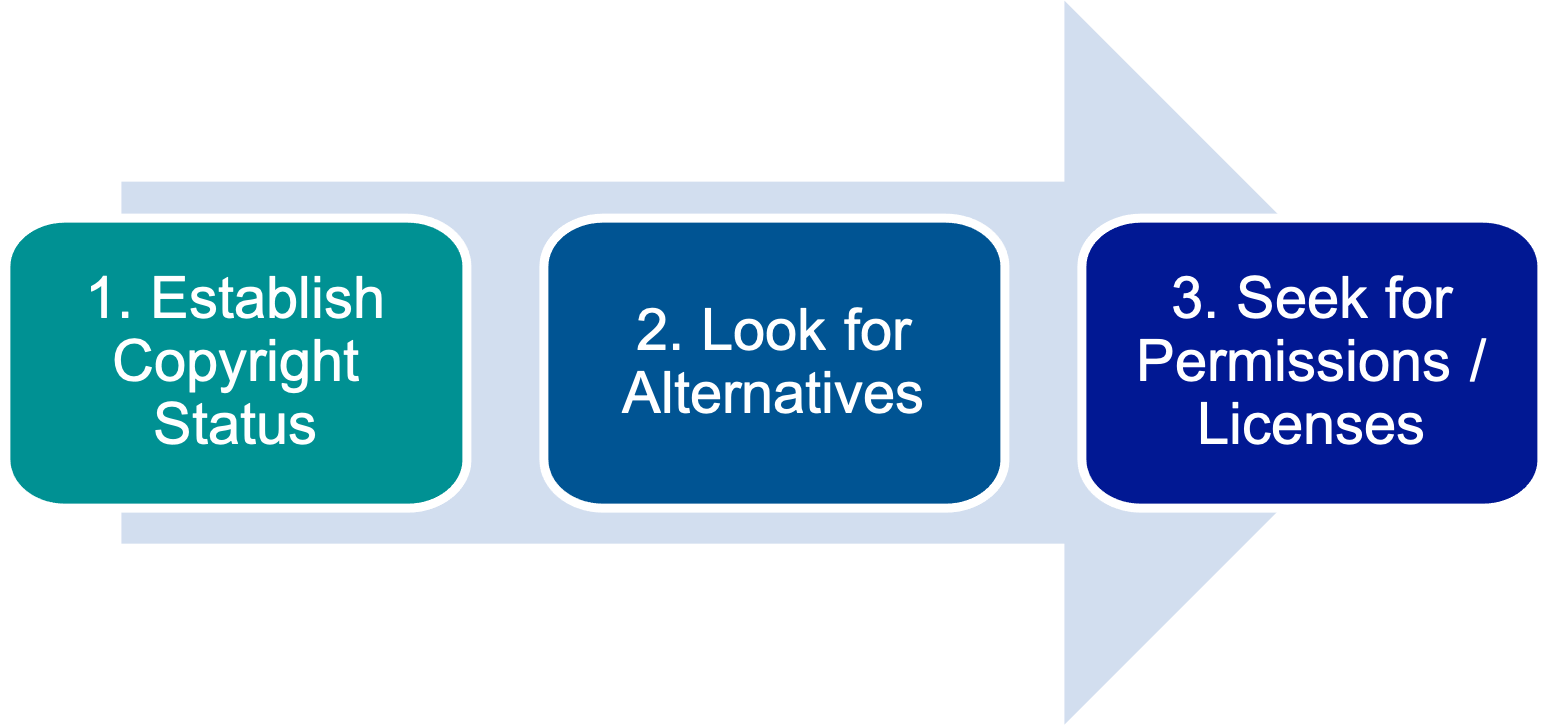
Watch a video on copyright guidelines here. Produced collaboratively by NUS Libraries, OLA and CIT.
Massive Open Online Course ("MOOC") instructors (i.e. NUS edX instructors) DO NOT have the same copyright protections as instructors teaching internal NUS courses for NUS Staff and Students. MOOC instructors must take extra precaution when creating syllabus materials.
The aim of this section is to educate MOOC instructors about copyright and open education resources to use in course content. If your course is one taught in a traditional ‘closed’ fashion, where copies of readings made for students may have been made under a license or copyright exception, this section may be relevant to you.
MOOCs have a wider audience. Potentially anyone with an internet connection can register and gain to MOOC content. MOOCs therefore distribute course materials at a scale unprecedented for face-to-face courses. Due to their open nature, the risk of mass infringement is greater:-

As it is difficult to apply the fair dealing exception in the MOOC context, the recommended approach is to either:-
Recommended workflow below:-


See also: Copyright Clearance for MOOCs at NTU here.
Making your own Content. It is best to create your own original content. Remember that you may need permission from the publisher to use even your own manuscript in your MOOC. Check the author-publisher agreement you signed to determine if the publisher owns the copyright to your work.
Permissions requests must be made for each specific use - if you have permission to use an article in your internal NUS course, this does not mean you have permission to use it in the MOOC. Permission must be sought for the specific use in MOOC. (source: NUS Office of Legal Affairs, Copyright Guidelines for Massive Open Online Courses)
Hyperlinking in MOOCs
Not all hyperlinking activity is recommended:
Drawbacks to Hyperlinking in MOOCs
Precautions to take with external websites:
Smith, K.L., & Fowler, L (2013). Drawing the Blueprint as we build: Setting up a Library-based Copyright & Permissions service for MOOCs.
For more information, please refer to our page on Creative Commons and Open Resources.
OERs. Fortunately, many 3rd party copyright resources can be accessed directly by students, and by members of the public, without any unauthorized copying taking place and therefore without infringing copyright. You may find such materials in Open Educational Resources (OERs).
Hyperlinking OERs. It is also safer to hyperlink OERs than upload materials as content uploaded may be potentially infringing. Just because OER may be downloaded for free does not mean that they may be uploaded. It is always good practice to check the terms and conditions of use of the website concerned, to see if this is allowed.
Obtaining Permission. If you are unable to find substitute materials in OER sites, you may seek to get permission, but it is not always possible to contact rights holders or pay the fees requested. It can also take a considerable time to seek permission.
For steps to seeking permission and sample permission refer to the page in this guide on seeking copyright permission.
Attribution. Re-use of copyrighted materials must be accompanied by attribution. Please refer to the tab on attribution.